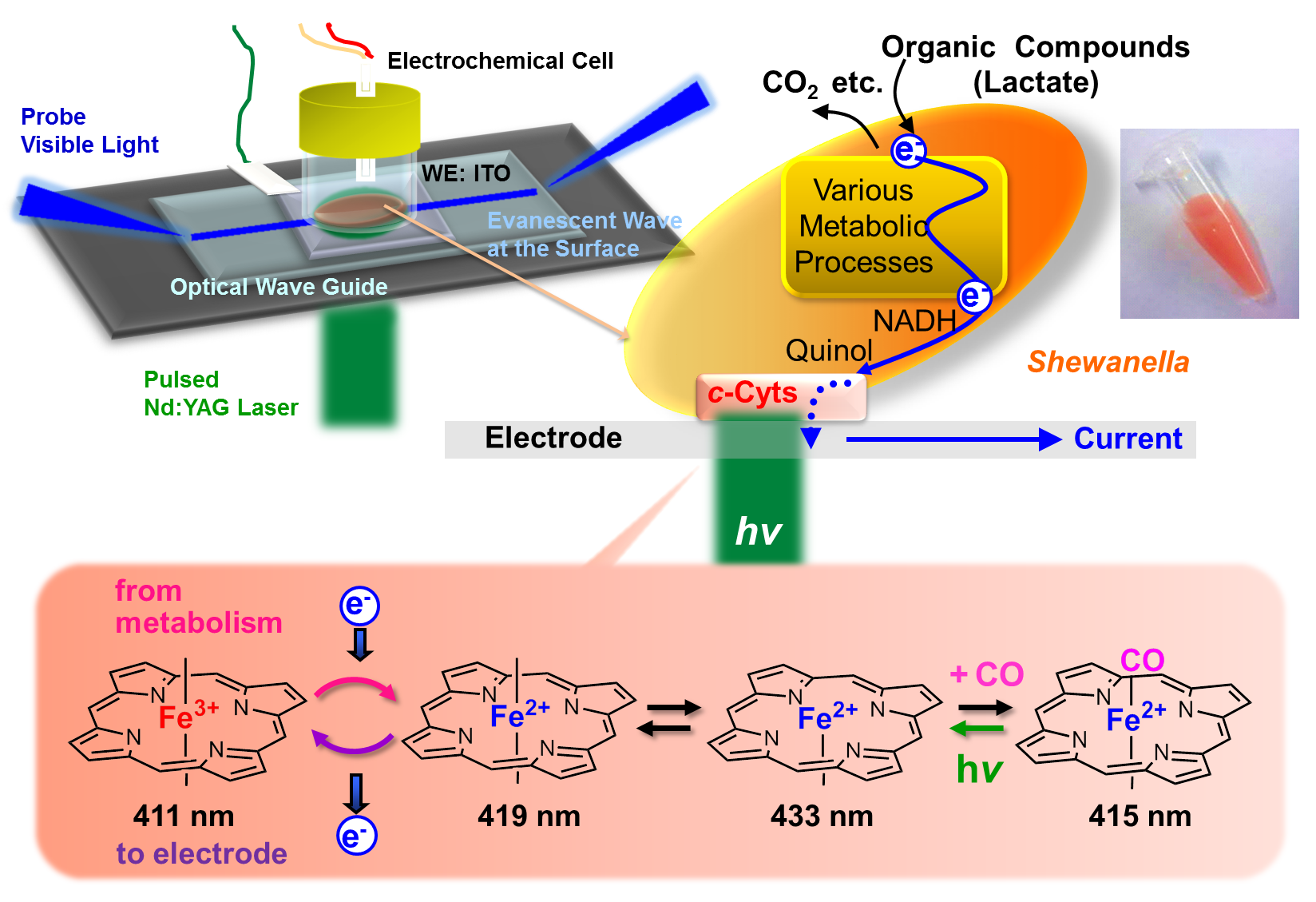Spectroscopic Analyses of Microbial Metabolism

So far, for the elucidation of biological functions, molecular chemistry has developed from the elucidation of molecular models to the elucidation of complex molecules such as protein, and acquired many achievements. On the other hand, it is well known that in living organisms, small changes in the biological environment (such as the complex formation etc.) could induce changing in electronic properties such as redox potentials. Thus, the elucidation of organism itself is indispensable for the development of molecular chemistry in the future.
From that perspective, we are studying on spectroscopic analyses of microbial metabolism. The research target is the current generation microbe Shewanella loihica PV-4. This microbe is able to use the extracellular electron transfer to generate the electronic current, so it is expected to be applied as a microbial fuel cell. On the other hand, it is known that the high amount of iron-porphyrin complexes and cytochrome C outside the cellular membrane mediate the extracellular electro transfer in Shewanella. Therefore the study on the electronic configuration of these complexes is vital for the elucidation of their functions.
Cyt C has a high absorption coefficient, so it is suitable for variable measurements using "light". In other words, Cyt C is a good model case for biological optical analyses. By applying the diffuse transmission method and the optical waveguide spectroscopy to optical analyses of microbes, we are developing the method to directly observe functional molecules inside living organism.
Related Papers
-
Y. Tokunou, P. Chinotaikul, S. Hattori, T. A. Clarke, L. Shi, K. Hashimoto, K. Ishii, and A. Okamoto
“Whole-Cell Circular Dichroism Spectroscopy Reveals an In Vivo-Specific Deca-Heme Conformation in Bacterial Surface Cytochromes”
Chem. Commun., 54, 13933 (2018). -
T. Shibanuma, R. Nakamura, Y. Hirakawa, K. Hashimoto, and K. Ishii
“Observation of In Vivo Cytochrome-Based Electron Transport Dynamics using Time-Resolved Evanescent Wave Electroabsorption Spectroscopy”
Angew. Chem. Int. Ed., 50, 9137 (2011). -
S. Mori, K. Ishii, Y. Hirakawa, R. Nakamura, and K. Hashimoto
"In vivo Participation of Artificial Porphyrins in Electron Transport Chains: Electrochemical and Spectroscopic Analyses of Microbial Metabolism"
Inorg. Chem., 50, 2037 (2011). -
Y. Zhao, K. Watanabe, R. Nakamura, S. Mori, H. Liu, K. Ishii, and K. Hashimoto
"Three-dimensional Conductive Nanowire Networks for Maximizing Anode Performance in Microbial Fuel Cells"
Chem. Eur. J., 16, 4982 (2010). -
A. Okamoto, R. Nakamura, K. Ishii and K. Hashimoto
"In vivo Electrochemistry of C-type Cytochrome-Mediated Electron-Transfer with Chemical Marking"
ChemBioChem, 10, 2329 (2009). -
R. Nakamura, K. Ishii, K. Hashimoto
"Electronic Absorption Spectra and Redox Properties of C Type Cytochromesin Living Microbes"
Angew. Chem. Int. Ed., 48, 1606 (2009).
